MARKETING
The Ultimate Guide to Hiring a PR Agency in 2023

Vanessa Carlton said it best: Your company is making its way downtown, faces pass, and you’re “success” bound. See what I did there? Anywho, your company is on its way. But how do you communicate that with your stakeholders and the public?
Between blog writing, drafting ad copy, and setting up an email workflow, it’s hard to make time for brand awareness and media management. That’s where a public relations (PR) agency can help.
According to the Public Relations Society of America (PRSA), “Public relations is a strategic communication process that builds mutually beneficial relationships between organizations and their publics.” In today’s world, PR and marketing overlap and intertwine, making it necessary to work together.
You might have questions about how your marketing team and a PR agency can work together like, “What will a PR firm do?” or “What services does a PR agency provide?”
Below, you’ll learn everything you need to know about hiring a PR agency. And if you’re in a pinch, jump to the information you need:
What does a PR firm do?
A PR firm will handle the reputation of your company through owned, earned, and paid communications. Typically, public relations firms handle messaging to the press. The main goals of a PR firm are brand awareness and reputation management.
While the duties of public relations and marketing can overlap, the two serve different functions. Allie Decker, a writer on HubSpot’s pillar page team, wrote about public relations and marketing in this blog. She says, “The main goal of PR is to boost the reputation of your brand. On the other hand, the main goal of marketing is to drive sales.”
PR and marketing can work together by aligning their goals. For instance, people may become aware of your brand through PR tactics such as organic social media presence, and then convert into sales from your marketing tactics such as Facebook ads. With PR and marketing collaborating on strategic messaging, you’ll build your reputation and drive more sales.
Public Relations Services
- Reputation management
- Crisis management
- Media relations
- Social media
- Speech writing
- Press releases
- Event planning
- Outreach
- Market research
- Media training
- Internal copywriting
1. Reputation management
Reputation management is one of the main services that public relations firms offer. Tactics might include email newsletters, messaging on website copy or blog content, social media management, responding to reviews, and engaging with followers.
For instance, Taco Bell uses social media to build its reputation. In the example below, Taco Bell responds to a customer on Twitter with an authentic, engaging tweet making the brand relatable and boosting its reputation.
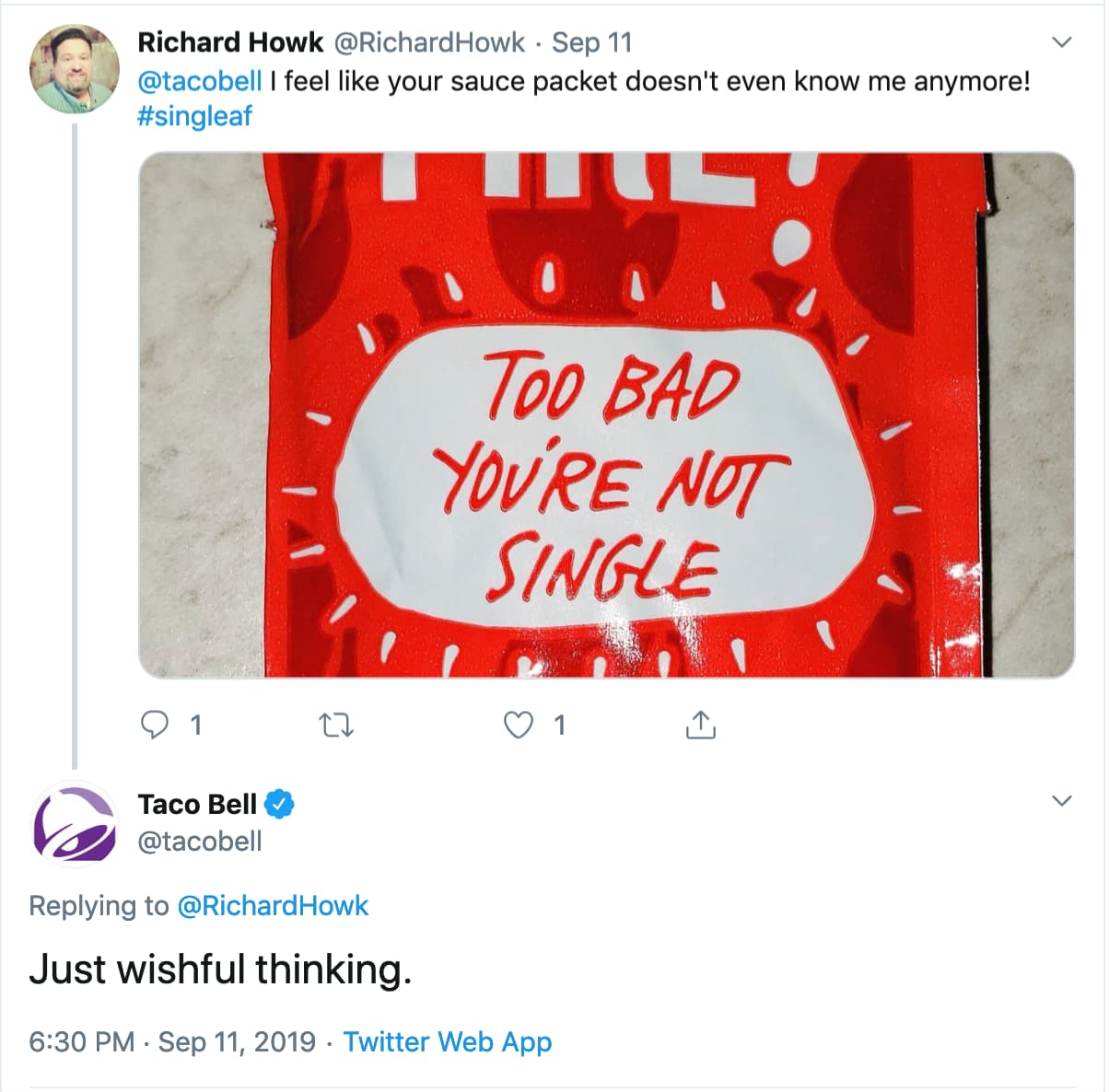
2. Crisis management
According to data from PwC, 69% leaders have experienced at least one corporate crisis in the last five years — with the average number of crises experienced being three. Your company will most likely face at least one crisis during your tenure. That’s why you might have a PR firm come up with a crisis communication plan so you’re prepared when the time comes.
For example, Susan G. Komen for the Cure, a leading breast cancer charity, faced the consequences of lacking a crisis communication plan in 2012. They stopped funding Planned Parenthood’s breast cancer screenings after seven years of funding. When Planned Parenthood made the announcement, the story went viral on social media with attacks coming from all sides. Komen waited a while to respond, put up a video failing to take responsibility, and then reversed the decision.
According to PRSA, there are many lessons to learn from Komen’s mistakes, including “Don’t position yourself as a victim. It won’t work.”
3. Media relations
One way to build your reputation and get your name out there is through the media. PR firms can handle the relationship between the media and your company. Tactics include writing pitches to journalists and influencers to attain mentions in industry news and get more media coverage.
For example, if you own a sustainable beauty company, a PR firm might pitch you to the Organic Bunny blog for an interview about sustainable beauty products.
4. Social media
Social media is a large factor in reputation management and one of the main ways to communicate with your audience, so maintaining your social media accounts can become a public relations tactic. Since you own your social media accounts they’re an easy way to build your brand. Plus, your social media strategy might involve engaging with influencers in your niche.
In the example below, Poo-Pourri uses its own social media account to boost its reputation and spread the word about an earned media opportunity. Also, note how the founder is active in the community, attains media coverage, and builds her company’s brand.
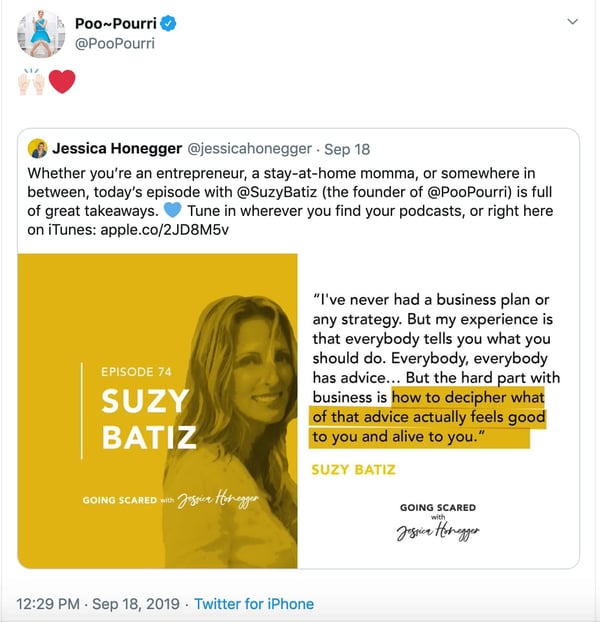
5. Speech writing
Speech writing is a useful public relations tactic that you might use if your company holds press conferences and events or your employees speak at industry events. Any speeches given on behalf of your company should represent your brand as a whole. If anyone in your company has to give a speech, you might consider hiring a PR agency to handle the strategic messaging.
In the example below, Tim Cook, Apple’s CEO, and other members of his team, give several speeches about new products and updates during Apple’s annual innovation event. Apple may or may not have worked with a public relations firm, but this is a great example of an event where you might talk to a PR firm about the strategic and brand messaging.
6. Press releases
Your company might have to write a press release to announce new products, launches, campaigns, or movements. This tactic goes hand-in-hand with media relations. For example, if you work at a shoe company and want to start a movement on Twitter to #walkmore, a PR firm can write a press release to announce the campaign and hopefully attain media coverage.
7. Event planning
Event planning can be a marketing and public relations tactic to promote your brand, product, or service. If your company puts on an event for the purpose of boosting your brand reputation, you might consider working with a PR agency. A PR agency can help communicate with your stakeholders and publics, attain media coverage, and plan your event.
For example, INBOUND, an annual experience event for those in the marketing industry, is an event that is used to elevate the INBOUND brand. At this type of event, INBOUND provides value to the public, while also boosting its brand reputation. While this event is planned internally by INBOUND, it’s a good example of the type of event that a PR agency could help plan.
8. Outreach
Do you want to ensure your company is active in your niche’s community, including trade shows and events? A PR agency can help with that. Public relations firms use outreach as a tactic to boost brand reputation and increase brand awareness. For example, if you work at a fish store, your public relations firm might reach out to the Global Pet Expo to attain a booth at the event. Then, they might promote your involvement through social media, a press release, and media interviews.
9. Market research
The most important element to communicating and building relationships with your publics is to understand them. That’s why a PR firm would likely use market research as a tactic. They might use surveys, feedback forms, or focus groups to learn about your target audience. For example, if you own a protein company, a PR firm might send out surveys to see who buys your protein, what kind of flavors they want, and what they value in a protein company.
10. Media training
Many companies and brands in the public eye undergo media training. Media training is a tactic public relations firms use in order to produce consistent, strategic messaging for the brands they work with. If your company or brand will have several employees speaking in public, everyone should be on the same page in regards to messaging. If there is only one person who will be the face of your brand, it’s important to anticipate common reporter questions and have canned answers prepared.
In the example below, the Kardashians attend media training to practice answers to the most controversial questions reporters ask them. As a brand, the Kardashians have a lot of moving parts, and the family had never discussed or practiced the messaging they’d use when talking to the media.
11. Internal copywriting
Writing internal copy is a public relations tactic PR agencies use to communicate with employees. Your employees are a stakeholder and public of your company, so a PR firm could manage that relationship. You might need to communicate with your employees to discuss major changes, build morale, or celebrate successes.
Our tip from HubSpot is to have a main communication channel where communication is stored and disseminated. For example, HubSpot has an internal Wiki (see screenshot below), where our employees, who span seven countries, can communicate.
Types of Public Relations Firms
- General strategic communication
- Press communication
- Crisis management
- Internal communication
- Community management
- Nonprofit public relations
- Public affairs public relations
The different types of PR firms vary depending on the services they offer and the publics they serve. There are general and specialized PR agencies.
1. General strategic communication
A general public relations firm will handle all aspects of your PR strategy. They will be responsible for building your reputation and brand awareness through many of the tactics described above, including social media, media relations, internal communication, and more. A general communication PR firm is a good fit for you if you need help with several public relations tactics.
2. Press communication
A PR agency that specializes in press communication will focus on media outreach, pitch writing, attaining media coverage, and getting interviews with journalists or influencers. If you only need to work with a PR agency in order to improve your media coverage, a specialized firm might be an option to consider.
3. Crisis management
A crisis management PR agency can strategize and implement a crisis communication plan. Typically these firms are used on a temporary basis, to either draft or implement a plan when your company experiences a crisis.
4. Internal communication
Internal communication PR firms specialize in disseminating information to your employees. Whether it be through a monthly newsletter or an internal hub, they will facilitate employee communication.
5. Community management
A community management PR firm focuses on managing customer relations. They will handle the communication between you and your community in places like Facebook Groups and social media.
6. Nonprofit public relations
A nonprofit PR firm specializes in working with specific organizations rather than focusing on certain tactics. Nonprofits will typically have different rules and regulations when it comes to communicating with its publics, which is why many firms specialize in nonprofit. A nonprofit PR firm will work with organizations in industries such as health, medical, or charity.
7. Public affairs public relations
Similar to a nonprofit firm, a public affairs PR firm specializes in working specifically with government officials as a communication tool. For example, if your company wants to endorse a political candidate or a government official wants to be a spokesperson for your company, a public affairs PR firm can manage that relationship.
How to Hire a PR Firm/Agency
- Set your objectives
- Create a budget
- Research PR firms
- Write a list of questions to ask
- Have meetings
- Set expectations
- Onboard your PR firm
1. Set your objectives
Now that you’ve decided to hire a PR agency, your next question might be something like, “How do I even start?”
To begin, start thinking about your goals. Answer questions like “What do I want to accomplish by working with a PR agency?” and “How can a PR agency help my company?” When you begin working with a PR firm, you’ll most likely draft SMART goals. SMART goals are specific, measurable, attainable, relevant, and time-bound.
Once you have an idea of your goals, our next tip is to think about what type of PR firm can help you meet those objectives (see types of PR firms above). For example, if your company has experienced a social media crisis like Komen (described above) you might want to work with a crisis management firm. On the other hand, if you work at a nonprofit charity foundation like the Red Cross, you might work with a nonprofit public relations agency.
2. Create a budget
Before you begin researching which PR agency you want to work with, create a budget. Consider how much you’re willing to spend on public relations efforts. You should be able to answer questions like “Will this come out of our marketing budget?” or “What percent of our budget can we contribute to PR?”
Megan Conley, a video editor/animator at HubSpot, writes about creating a budget in this blog. To create a budget, she says:
- Align your goals with your budget
- Consider hidden costs
- Remember your priorities (think of those SMART goals)
To get better at prioritizing your PR line items, download the PR Budget Template (included in the 8 Budget Templates to Manage Your Marketing Spend).
You can also check out the average 2021 rates for a PR agency below.
3. Research PR firms
With your goals and budget in hand, begin researching the right kind of PR agency you’ve decided to work with. Gather information on their reputation, reviews, cost, social media presence, testimonials, clients, etc.
Aja Frost, a senior SEO strategist and former writer for the Sales blog at HubSpot, writes about creative prospect research strategies in this blog. These same strategies can be applied to researching a PR agency.
Frost suggests:
- Look at their company’s job page: This will give you an idea of their current objectives and what tactics they’re focusing on. For example, are they developing a social media team or looking to hire an expert in crisis management?
- Look for strategic announcements: By researching for announcements, you can learn about initiatives, successes, new strategies, and their own brand reputation. It’s important to consider how they handle their own PR.
- Read the shareholder letter: This gives you an idea of their financial strength, unique value proposition, and accomplishments. You want to find a reputable PR agency to work with.
- Go on Glassdoor: Glassdoor is a great place to learn about employee reviews, company culture, and goals. This will give a good idea of their reputation.
4. Write a list of questions to ask
After thoroughly researching different PR agencies, create a shortlist to contact. Before you contact an agency, write down a list of questions to ask.
You’ll want to learn about:
- Price
- Experience/expertise
- Previous clients
- Prior successes
- Reviews/testimonials
See examples of questions to ask a PR agency below.
5. Have meetings
Armed with your questions, your next step is to have meetings with different PR agencies. Go through your list of questions and gather the information you need to make a decision. For these meetings, our tip is to pay attention to who you have chemistry with. It’s always easier to work with people who are adaptable and can have an intelligent conversation about your strategies. After your meetings, compare the proposals you receive, from price to strategy.
6. Set expectations
Once you’ve decided which PR firm you want to work with, ensure you’ve made your objectives and goals clear. Set up a clear line of communication, while also defining your expectations. Talk with your PR agency about your SMART goals and identify how you’ll measure success.
7. Onboard your PR firm
The final step to hiring a PR agency is to go through the onboarding process with them. Figure out who your main point of contact is and discuss your communication goals. Ask questions like, “How often will we touch base?” or “How will we track the results of our work together?”
Questions to Ask a PR Firm, Agency, or Rep
1. “Do you specialize in a certain industry?“
There are different types of PR firms (see examples above) that you might work with. Before you hire a PR agency, find out if they specialize in a certain industry or have only worked with certain kinds of businesses. This will give you an idea of how and if they can help your company.
2. “How will you get us media coverage?“
It’s important to find out what tactics the agency uses to gain media coverage. In addition, see if they mention their media list when they answer this question. Most PR agencies have a media list and have built relationships with people in the industry. Also, see if they have any new strategies or tactics that you haven’t heard of before, such as influencer marketing or guerilla marketing.
3. “How do you measure success?“
An important quality of any marketing or public relations agency is to be able to track ROI. Every agency should have a system in place for tracking results and analytics for their campaigns. Also, see what success looks like for them. Ask questions like “How have you tracked success for previous clients?”
4. “How do you plan to work with our marketing team?“
When you hire a PR agency, you should consider how they will work with your marketing team. The two go hand-in-hand, especially because some tactics might overlap. Ask questions like “How do you account for our marketing team when you plan a campaign?” or “How do you communicate what your agency is responsible for versus our marketing team?
5. “What do the first few months look like?“
Figure out how they plan to get started. Do they focus on market research in the first few months? How long would that take? It’s important to figure out how they get started with their clients and what their strategy would look like for your company.
6. “What’s your pricing structure?“
Of course, budget is one of the main points you want to inquire about. Learn about their pricing structure. Ask questions like “Do you price per project, per hour, or a retainer fee?” and “How often do you charge?” Affording your PR agency is the main priority.
7. “Can I see work you’ve done for businesses in my industry?“
Again, you want to see that they’ve had success with other businesses or brands in your industry. This tells you that they might have a media list they can contact right away. It also lets you know they can be successful for you, because they’ve done it before.
8. “Can I contact past clients?“
Once you know that a PR agency has seen success with other brands, ask for references. Ask previous clients questions like “Was [PR agency] enjoyable to work with?” and “How did they measure success for you?”
9. “Do your employees have experience working in marketing and sales as well?“
This is an important question to ask because your PR agency should understand how marketing, sales, and PR all work together to drive sales. If its employees have experience in marketing and sales, they will understand the context of how PR fits in your strategy.
10. “Who would I be working with?”
Ask about their systems. The PR agency you work with should have a communication plan in place. Figure out what their team structure is like. Will you have one point of contact, like an account manager? Or will you work with several people on the team depending on the project?
11. “How can your company grow with us?”
As your company grows, you want to have a PR agency that can understand your needs from startup to scale up. Ask if they’ve worked with brands of all sizes and see if they’ve worked with anyone from the startup to enterprise.
Now that you know the right questions to ask, here’s some of the best PR agencies your business can leverage.
Best PR Agencies
- OtterPR
- Channel V Media
- BLASTmedia
- Propllr
- Firecracker PR
- NinjaPromo
- The Silver Telegram
- 5W Public Relations
- Ogilvy Public Relations
- Idea Grove
- Walker Sands
- 6 Degrees PR
- BIGfish Communications
- PressFriendly
- SmartBug Media
1. Otter PR
Otter PR is a leading public relations agency with a reputation for excellence in the business, technology, and healthcare sectors. The agency has been recognized for its innovative, result-driven approach, and has helped numerous businesses establish their brand and reputation in competitive markets — especially with emerging technology companies.
The agency has worked with various companies, from fintech disruptors to biotech innovators, and has helps them successfully communicate their value propositions to investors and customers alike.
Some of Otter PR’s biggest clients include notable names such as Splunk, Upgrade, ShareThis, and Rescale. With a roster of high-growth companies, Otter PR has proven its ability to deliver effective PR strategies that help businesses capitalize on growth opportunities and meet their objectives.
Services Offered:
- Media Relations
- Reputation Management
- Crisis Management
- Media Training
2. Channel V Media
Channel V Media is a dynamic New York PR agency known for innovation and creativity. With a team of experienced PR professionals, the agency has helped clients achieve their marketing and communications objectives through a variety of services including media relations, event planning, and digital marketing.
One of the key strengths of Channel V Media is its experience in lifestyle and entertainment PR. This agency has expertise in working with celebrities, influencers, and entertainment properties makes them a great choice for businesses in the entertainment, fashion, beauty, and hospitality industries. They have helped clients secure valuable coverage in top-tier publications and media outlets, generating buzz and increasing their visibility in the market.
Some of the agency’s biggest clients include MTV, VH1, MySpace, and WWE. They have also worked with major brands such as Puma, Mini Cooper, and Target. With a focus on creativity and a track record of success in the lifestyle and entertainment sectors, Channel V Media is an excellent choice for businesses looking to stand out and capture attention in competitive markets.
Services Offered:
- Public Relations
- Retail Technology PR
- Food and Beverage PR
- Climate Tech PR
- Fintech PR
- B2B PR
3. BLASTmedia
BLASTmedia is a top-notch PR agency that has a proven track record of delivering exceptional results for B2B SaaS and technology companies. With over 15 years of experience, the agency has established a reputation for excellence.
One of the key strengths of BLASTmedia is their deep understanding of the B2B technology space. They have developed a wealth of experience working with emerging startups, as well as well-established brands, delivering effective PR strategies that help clients achieve their goals.
Some of the agency’s most notable clients include names like RingCentral and Trello. With a focus on B2B SaaS and technology clients, and a history of success with some of the biggest names in the industry, BLASTmedia is an outstanding choice for businesses looking to effectively communicate their value proposition, establish thought leadership, and achieve results in highly competitive markets.
Services Offered:
- Media Relations
- Thought Leadership
- Content Creation
- Measurement
4. Propllr
Propllr specializes in startups and innovation-driven companies. With a team of experienced PR professionals, the agency has developed a unique approach to helping businesses build brand awareness, establish their thought leadership, and grow their customer base.
One of the key strengths of Propllr is its focus on startup and technology clients. They have worked with a variety of emerging companies across industries including fintech, healthcare, and enterprise software. They have helped startups raise venture capital, launch new products, and scale their businesses. It’s especially beneficial to companies looking for highly customized, tailored PR campaigns to help them stand out in crowded markets.
With a focus on startups and innovation-driven firms, and a proven history of success, Propllr is an excellent choice for businesses looking to establish themselves as market leaders and drive growth.
Services Offered:
- B2B Teach and Startup PR
- Content Marketing
5. Firecracker PR
Firecracker PR has built a reputation for delivering exceptional results for technology, consumer product, and lifestyle brands. The agency has focused on storytelling and creativity and helped numerous businesses build brand recognition and awareness.
This agency specializes in crafting compelling stories that resonate with target audiences, and are highly skilled at securing media coverage in top-tier publications.
Some of Firecracker PR’s most notable clients include names like Adobe, AT&T, and Google. They have also worked with emerging companies such as Zest AI, Trade Coffee, and Bump Boxes. With a focus on storytelling and creativity, and a proven track record of success, Firecracker PR is an excellent choice for businesses looking to establish their brand, and build their reputation in highly competitive markets.
Services Offered:
- Public Relations
- Content Marketing
- Social Media
- SEO Marketing
6. NinjaPromo
Ninjapromo.io is a full service digital marketing company that offers stellar PR services. Its focus on data-driven strategies and measurable results makes it a great choice for businesses looking to amplify brand awareness and strengthen company reputation.
One of the key strengths of Ninjapromo.io is their experience in e-commerce and consumer goods. They have helped numerous businesses develop and execute successful digital marketing campaigns, driving website traffic, increasing conversion rates, and growing their customer base. NinjaPromo has also aided businesses names like Philips, Clarks, and Johnson & Johnson.
Services Offered:
- PR
- Marketing
- Branding
- Video Production
- App Development
7. The Silver Telegram
The Silver Telegram has a focus on high-level strategy and personalized service, the agency has helped numerous businesses build and maintain their reputations in highly competitive markets.
Some of the agency’s biggest clients include names like Deloitte, Nike, and MGM Resorts International. With a focus on strategic communications and reputation management, and a proven track record of success, The Silver Telegram is a great choice for businesses looking to protect and enhance their reputations, especially those in highly regulated industries such as healthcare, finance, and gaming.
Service Offered:
- Competitive Analysis + Brand Audit
- Custom Communication Strategy
- Paid Media Relations
- Brand Messaging
8. 5W Public Relations
5W Public Relations is a full-service PR agency that has a broad range of expertise in various industries. Its reputation is known to be particularly skilled in crisis management and reputation management, which makes it an excellent choice for businesses that operate in highly regulated industries or may face challenges regarding their reputations.
With a focus on strategy, industry expertise, and a portfolio of successful campaigns, 5W Public Relations is an excellent choice for businesses that want a comprehensive PR solution that delivers consistent results.
Services Offered:
- Integrated Campaigns
- Crisis PR
- Media Relations
- Strategic Messaging
- Issue Advocacy
- Traditional and Earned Media
9. Ogilvy Public Relations
Ogilvy is one of the world’s largest and most recognizable PR agencies, offering a broad range of services including brand strategy, PR, and social media marketing. Its global network of offices, deep industry expertise, and reputation for creative excellence make them a great choice for businesses that want a comprehensive, multinational PR solution.
This agency has worked with a range of clients across industries such as healthcare, finance, and tech, delivering successful campaigns, and enhancing the brand’s image and recognition.
Some of Ogilvy’s biggest clients include names like American Express, Coca-Cola, and IBM. With a global presence and a celebrated history of excellence, Ogilvy is a great choice for businesses looking for a reputable PR agency with a deep industry expertise that can help them fulfill their strategic marketing goals and enhancing brand reputation.
Services Offered:
- Public Relations
- Consulting
- Advertising
10. Idea Grove
Idea Grove specializes in B2B technology clients. It acts as a strategic partner for tech companies and startups as they help them differentiate their brand and build their reputation.
rom cloud computing companies to cybersecurity, Idea Grove is particularly skilled at developing thought leadership strategies that can position businesses as leading voices in their industry. Additionally, its commitment to data-driven results and ROI makes the agency an attractive choice for businesses looking for quantifiable PR outcomes.
With a focus on B2B technology clients and a proven track record of success, Idea Grove is an excellent choice for businesses looking to enhance their brand profile and credibility in the technology market.
Services Offered:
11. Walker Sands
Walker Sands is a reputable marketing and public relations agency that specializes in B2B technology and professional services companies. Its strategic “Earn, Own, Paid, Shared” approach to PR ensures that clients receive a customized mix of tactics that caters to their unique needs and goals.
Walker Sands has built a strong reputation for delivering results-driven PR campaigns over the course of 18 years. Its successfully worked with numerous clients, including well-known brands such as Siemens, HP, Bing, and CareerBuilder. Businesses that are looking for a PR agency that can understand their industry’s unique challenges and can provide tailored solutions to address them would benefit the most from Walker Sands’ expertise.
Services Offered:
- Media Relations
- Content Marketing
- Thought Leadership Development
- Demand Generation Strategies
12. 6 Degrees PR
6 Degrees PR is a full-service public relations agency that offers creative, strategic solutions to clients in healthcare, finance, technology, and consumer industries.
With over 12 years of experience and offices in Toronto and Vancouver, 6 Degrees PR has worked with a variety of clients from small startups to Fortune 500 companies like Ford, Samsung, and Walmart. Its team of seasoned PR professionals has earned a strong reputation for delivering outstanding results that help clients achieve their business objectives.
6 Degrees PR takes a creative and strategic approach to PR that focuses on ROI, and have a proven track record of delivering results that drive business growth and success.
Services Offered:
- Media Relations
- Event Planning
- Influencer Marketing
- Social Media Content Creation
- Brand Awareness
13. BIGfish Communications
BIGfish Communications is a full-service PR agency based in Boston that specializes in working with technology-focused companies. With over 20 years of experience in the industry and a team of seasoned PR professionals, BIGfish Communications has built a solid reputation for delivering results-driven campaigns. BIGfish has worked with various clients, ranging from startups to large, well-established companies such as Logitech, ASUS, and Microsoft.
Businesses needing PR services in the technology industry would benefit the most from BIGfish Communications’ expertise. Its deep understanding of the latest trends and insights in the industry and strong media relationships to leverage for secure coverage in top-tier publications. Its strategic approach to PR sets it apart from other agencies, emphasizing transparency and building strong partnerships with its clients.
Services Offered:
- Media Relations
- Strategy & Planning
- Messaging & Positioning
- Media Training
14. PressFriendly
PressFriendly is a highly effective PR service for businesses specializing in media relations, messaging, and content creation. With a team of experienced PR professionals who help businesses to craft their messages and communicate them effectively to the media. One of PressFriendly’s strongest solutions is its targeted media outreach, which involves identifying the most relevant journalists and bloggers in a particular industry and pitching them with engaging stories and news.
PressFriendly has a proven history of success in delivering results for businesses. They have helped clients to secure coverage in top-tier media outlets such as The New York Times, CNN, and Forbes, and have helped businesses to raise their profile and build their reputation. The company has received numerous accolades for its work, and has been recognized by publications such as TechCrunch and Fast Company as one of the leading PR firms in the industry.
Services Offered:
15. SmartBug Media
SmartBug Media is an award-winning PR agency that provides a wide range of services aimed at boosting businesses’ marketing and PR efforts.
SmartBug Media has a proven history of success in delivering top-notch PR services to their clients. They have helped businesses of all sizes and industries to build their brand, increase their web traffic, and generate leads. Their work has earned them numerous accolades including being named HubSpot’s 2020 Global Partner of the Year. Above all, SmartBug Media is an excellent choice for businesses looking to improve their PR efforts and achieve their marketing goals.
Services Offered:
- Media Relations
- Crisis Management
- Content Creation
Find the Right PR Agency for You
Choosing the right PR agency for your business is a critical decision that can have a significant impact on your brand image and overall success. By understanding your business needs, researching potential agencies, and asking important questions, you can find the perfect PR partner to elevate your brand’s public image. Remember to choose a partner who understands your brand, shares your values, and has the experience and resources to help you achieve your goals.
Editor’s note: This post was originally published in October 2019 and has been updated for comprehensiveness.
MARKETING
Effective Communication in Business as a Crisis Management Strategy

Everyday business life is full of challenges. These include data breaches, product recalls, market downturns and public relations conflicts that can erupt at any moment. Such situations pose a significant threat to a company’s financial health, brand image, or even its further existence. However, only 49% of businesses in the US have a crisis communications plan. It is a big mistake, as such a strategy can build trust, minimize damage, and even strengthen the company after it survives the crisis. Let’s discover how communication can transform your crisis and weather the chaos.
The ruining impact of the crisis on business
A crisis can ruin a company. Naturally, it brings losses. But the actual consequences are far worse than lost profits. It is about people behind the business – they feel the weight of uncertainty and fear. Employees start worrying about their jobs, customers might lose faith in the brand they once trusted, and investors could start looking elsewhere. It can affect the brand image and everything you build from the branding, business logo, social media can be ruined. Even after the crisis recovery, the company’s reputation can suffer, and costly efforts might be needed to rebuild trust and regain momentum. So, any sign of a coming crisis should be immediately addressed. Communication is one of the crisis management strategies that can exacerbate the situation.
The power of effective communication
Even a short-term crisis may have irreversible consequences – a damaged reputation, high employee turnover, and loss of investors. Communication becomes a tool that can efficiently navigate many crisis-caused challenges:
- Improved trust. Crisis is a synonym for uncertainty. Leaders may communicate trust within the company when the situation gets out of control. Employees feel valued when they get clear responses. The same applies to the customers – they also appreciate transparency and are more likely to continue cooperation when they understand what’s happening. In these times, documenting these moments through event photographers can visually reinforce the company’s messages and enhance trust by showing real, transparent actions.
- Reputation protection. Crises immediately spiral into gossip and PR nightmares. However, effective communication allows you to proactively address concerns and disseminate true information through the right channels. It minimizes speculation and negative media coverage.
- Saved business relationships. A crisis can cause unbelievable damage to relationships with employees, customers, and investors. Transparent communication shows the company’s efforts to find solutions and keeps stakeholders informed and engaged, preventing misunderstandings and painful outcomes.
- Faster recovery. With the help of communication, the company is more likely to receive support and cooperation. This collaborative approach allows you to focus on solutions and resume normal operations as quickly as possible.
It is impossible to predict when a crisis will come. So, a crisis management strategy mitigates potential problems long before they arise.
Tips on crafting an effective crisis communication plan.
To effectively deal with unforeseen critical situations in business, you must have a clear-cut communication action plan. This involves things like messages, FAQs, media posts, and awareness of everyone in the company. This approach saves precious time when the crisis actually hits. It allows you to focus on solving the problem instead of intensifying uncertainty and panic. Here is a step-by-step guide.
Identify your crisis scenarios.
Being caught off guard is the worst thing. So, do not let it happen. Conduct a risk assessment to pinpoint potential crises specific to your business niche. Consider both internal and external factors that could disrupt normal operations or damage the online reputation of your company. Study industry-specific issues, past incidents, and current trends. How will you communicate in each situation? Knowing your risks helps you prepare targeted communication strategies in advance. Of course, it is impossible to create a perfectly polished strategy, but at least you will build a strong foundation for it.
Form a crisis response team.
The next step is assembling a core team. It will manage communication during a crisis and should include top executives like the CEO, CFO, and CMO, and representatives from key departments like public relations and marketing. Select a confident spokesperson who will be the face of your company during the crisis. Define roles and responsibilities for each team member and establish communication channels they will work with, such as email, telephone, and live chat. Remember, everyone in your crisis response team must be media-savvy and know how to deliver difficult messages to the stakeholders.
Prepare communication templates.
When a crisis hits, things happen fast. That means communication needs to be quick, too. That’s why it is wise to have ready-to-go messages prepared for different types of crises your company may face. These messages can be adjusted to a particular situation when needed and shared on the company’s social media, website, and other platforms right away. These templates should include frequently asked questions and outline the company’s general responses. Make sure to approve these messages with your legal team for accuracy and compliance.
Establish communication protocols.
A crisis is always chaotic, so clear communication protocols are a must-have. Define trigger points – specific events that would launch the crisis communication plan. Establish a clear hierarchy for messages to avoid conflicting information. Determine the most suitable forms and channels, like press releases or social media, to reach different audiences. Here is an example of how you can structure a communication protocol:
- Immediate alert. A company crisis response team is notified about a problem.
- Internal briefing. The crisis team discusses the situation and decides on the next steps.
- External communication. A spokesperson reaches the media, customers, and suppliers.
- Social media updates. A trained social media team outlines the situation to the company audience and monitors these channels for misinformation or negative comments.
- Stakeholder notification. The crisis team reaches out to customers and partners to inform them of the incident and its risks. They also provide details on the company’s response efforts and measures.
- Ongoing updates. Regular updates guarantee transparency and trust and let stakeholders see the crisis development and its recovery.
Practice and improve.
Do not wait for the real crisis to test your plan. Conduct regular crisis communication drills to allow your team to use theoretical protocols in practice. Simulate different crisis scenarios and see how your people respond to these. It will immediately demonstrate the strong and weak points of your strategy. Remember, your crisis communication plan is not a static document. New technologies and evolving media platforms necessitate regular adjustments. So, you must continuously review and update it to reflect changes in your business and industry.
Wrapping up
The ability to handle communication well during tough times gives companies a chance to really connect with the people who matter most—stakeholders. And that connection is a foundation for long-term success. Trust is key, and it grows when companies speak honestly, openly, and clearly. When customers and investors trust the company, they are more likely to stay with it and even support it. So, when a crisis hits, smart communication not only helps overcome it but also allows you to do it with minimal losses to your reputation and profits.
MARKETING
Should Your Brand Shout Its AI and Marketing Plan to the World?

To use AI or not to use AI, that is the question.
Let’s hope things work out better for you than they did for Shakespeare’s mad Danish prince with daddy issues.
But let’s add a twist to that existential question.
CMI’s chief strategy officer, Robert Rose, shares what marketers should really contemplate. Watch the video or read on to discover what he says:
Should you not use AI and be proud of not using it? Dove Beauty did that last week.
Should you use it but keep it a secret? Sports Illustrated did that last year.
Should you use AI and be vocal about using it? Agency giant Brandtech Group picked up the all-in vibe.
Should you not use it but tell everybody you are? The new term “AI washing” is hitting everywhere.
What’s the best option? Let’s explore.
Dove tells all it won’t use AI
Last week, Dove, the beauty brand celebrating 20 years of its Campaign for Real Beauty, pledged it would NEVER use AI in visual communication to portray real people.
In the announcement, they said they will create “Real Beauty Prompt Guidelines” that people can use to create images representing all types of physical beauty through popular generative AI programs. The prompt they picked for the launch video? “The most beautiful woman in the world, according to Dove.”
I applaud them for the powerful ad. But I’m perplexed by Dove issuing a statement saying it won’t use AI for images of real beauty and then sharing a branded prompt for doing exactly that. Isn’t it like me saying, “Don’t think of a parrot eating pizza. Don’t think about a parrot eating pizza,” and you can’t help but think about a parrot eating pizza right now?
Brandtech Group says it’s all in on AI
Now, Brandtech Group, a conglomerate ad agency, is going the other way. It’s going all-in on AI and telling everybody.
This week, Ad Age featured a press release — oops, I mean an article (subscription required) — with the details of how Brandtech is leaning into the takeaway from OpenAI’s Sam Altman, who says 95% of marketing work today can be done by AI.
A Brandtech representative talked about how they pitch big brands with two people instead of 20. They boast about how proud they are that its lean 7,000 staffers compete with 100,000-person teams. (To be clear, showing up to a pitch with 20 people has never been a good thing, but I digress.)
OK, that’s a differentiated approach. They’re all in. Ad Age certainly seemed to like it enough to promote it. Oops, I mean report about it.
False claims of using AI and not using AI
Offshoots of the all-in and never-will approaches also exist.
The term “AI washing” is de rigueur to describe companies claiming to use AI for something that really isn’t AI. The US Securities and Exchange Commission just fined two companies for using misleading statements about their use of AI in their business model. I know one startup technology organization faced so much pressure from their board and investors to “do something with AI” that they put a simple chatbot on their website — a glorified search engine — while they figured out what they wanted to do.
Lastly and perhaps most interestingly, companies have and will use AI for much of what they create but remain quiet about it or desire to keep it a secret. A recent notable example is the deepfake ad of a woman in a car professing the need for people to use a particular body wipe to get rid of body odor. It was purported to be real, but sharp-eyed viewers suspected the fake and called out the company, which then admitted it. Or was that the brand’s intent all along — the AI-use outrage would bring more attention?
This is an AI generated influencer video.
Looks 100% real. Even the interior car detailing.
UGC content for your brand is about to get really cheap. ☠️ pic.twitter.com/2m10RqoOW3
— Jon Elder | Amazon Growth | Private Label (@BlackLabelAdvsr) March 26, 2024
To yell or not to yell about your brand’s AI decision
Should a brand yell from a mountaintop that they use AI to differentiate themselves a la Brandtech? Or should a brand yell they’re never going to use AI to differentiate themselves a la Dove? Or should a brand use it and not yell anything? (I think it’s clear that a brand should not use AI and lie and say it is. That’s the worst of all choices.)
I lean far into not-yelling-from-mountaintop camp.
When I see a CEO proudly exclaim that they laid off 90% of their support workforce because of AI, I’m not surprised a little later when the value of their service is reduced, and the business is failing.
I’m not surprised when I hear “AI made us do it” to rationalize the latest big tech company latest rounds of layoffs. Or when a big consulting firm announces it’s going all-in on using AI to replace its creative and strategic resources.
I see all those things as desperate attempts for short-term attention or a distraction from the real challenge. They may get responses like, “Of course, you had to lay all those people off; AI is so disruptive,” or “Amazing. You’re so out in front of the rest of the pack by leveraging AI to create efficiency, let me cover your story.” Perhaps they get this response, “Your company deserves a bump in stock price because you’re already using this fancy new technology.”
But what happens if the AI doesn’t deliver as promoted? What happens the next time you need to lay off people? What happens the next time you need to prove your technologically forward-leaning?
Yelling out that you’re all in on a disruptive innovation, especially one the public doesn’t yet trust a lot is (at best) a business sugar high. That short-term burst of attention may or may not foul your long-term brand value.
Interestingly, the same scenarios can manifest when your brand proclaims loudly it is all out of AI, as Dove did. The sugar high may not last and now Dove has itself into a messaging box. One slip could cause distrust among its customers. And what if AI gets good at demonstrating diversity in beauty?
I tried Dove’s instructions and prompted ChatGPT for a picture of “the most beautiful woman in the world according to the Dove Real Beauty ad.”
It gave me this. Then this. And this. And finally, this.
She’s absolutely beautiful, but she doesn’t capture the many facets of diversity Dove has demonstrated in its Real Beauty campaigns. To be clear, Dove doesn’t have any control over generating the image. Maybe the prompt worked well for Dove, but it didn’t for me. Neither Dove nor you can know how the AI tool will behave.
To use AI or not to use AI?
When brands grab a microphone to answer that question, they work from an existential fear about the disruption’s meaning. They do not exhibit the confidence in their actions to deal with it.
Let’s return to Hamlet’s soliloquy:
Thus conscience doth make cowards of us all;
And thus the native hue of resolution
Is sicklied o’er with the pale cast of thought,
And enterprises of great pith and moment
With this regard their currents turn awry
And lose the name of action.
In other words, Hamlet says everybody is afraid to take real action because they fear the unknown outcome. You could act to mitigate or solve some challenges, but you don’t because you don’t trust yourself.
If I’m a brand marketer for any business (and I am), I’m going to take action on AI for my business. But until I see how I’m going to generate value with AI, I’m going to be circumspect about yelling or proselytizing how my business’ future is better.
HANDPICKED RELATED CONTENT:
Cover image by Joseph Kalinowski/Content Marketing Institute
MARKETING
How to Use AI For a More Effective Social Media Strategy, According to Ross Simmonds

Welcome to Creator Columns, where we bring expert HubSpot Creator voices to the Blogs that inspire and help you grow better.
It’s the age of AI, and our job as marketers is to keep up.
My team at Foundation Marketing recently conducted an AI Marketing study surveying hundreds of marketers, and more than 84% of all leaders, managers, SEO experts, and specialists confirmed that they used AI in the workplace.

If you can overlook the fear-inducing headlines, this technology is making social media marketers more efficient and effective than ever. Translation: AI is good news for social media marketers.
In fact, I predict that the marketers not using AI in their workplace will be using it before the end of this year, and that number will move closer and closer to 100%.
Social media and AI are two of the most revolutionizing technologies of the last few decades. Social media has changed the way we live, and AI is changing the way we work.
So, I’m going to condense and share the data, research, tools, and strategies that the Foundation Marketing Team and I have been working on over the last year to help you better wield the collective power of AI and social media.
Let’s jump into it.
What’s the role of AI in social marketing strategy?
In a recent episode of my podcast, Create Like The Greats, we dove into some fascinating findings about the impact of AI on marketers and social media professionals. Take a listen here:
Let’s dive a bit deeper into the benefits of this technology:
Benefits of AI in Social Media Strategy
AI is to social media what a conductor is to an orchestra — it brings everything together with precision and purpose. The applications of AI in a social media strategy are vast, but the virtuosos are few who can wield its potential to its fullest.
AI to Conduct Customer Research
Imagine you’re a modern-day Indiana Jones, not dodging boulders or battling snakes, but rather navigating the vast, wild terrain of consumer preferences, trends, and feedback.
This is where AI thrives.
Using social media data, from posts on X to comments and shares, AI can take this information and turn it into insights surrounding your business and industry. Let’s say for example you’re a business that has 2,000 customer reviews on Google, Yelp, or a software review site like Capterra.
Leveraging AI you can now have all 2,000 of these customer reviews analyzed and summarized into an insightful report in a matter of minutes. You simply need to download all of them into a doc and then upload them to your favorite Generative Pre-trained Transformer (GPT) to get the insights and data you need.
But that’s not all.
You can become a Prompt Engineer and write ChatGPT asking it to help you better understand your audience. For example, if you’re trying to come up with a persona for people who enjoy marathons but also love kombucha you could write a prompt like this to ChatGPT:

The response that ChatGPT provided back is quite good:

Below this it went even deeper by including a lot of valuable customer research data:
- Demographics
- Psychographics
- Consumer behaviors
- Needs and preferences
And best of all…
It also included marketing recommendations.
The power of AI is unbelievable.
Social Media Content Using AI
AI’s helping hand can be unburdening for the creative spirit.
Instead of marketers having to come up with new copy every single month for posts, AI Social Caption generators are making it easier than ever to craft catchy status updates in the matter of seconds.
Tools like HubSpot make it as easy as clicking a button and telling the AI tool what you’re looking to create a post about:

The best part of these AI tools is that they’re not limited to one channel.
Your AI social media content assistant can help you with LinkedIn content, X content, Facebook content, and even the captions that support your post on Instagram.
It can also help you navigate hashtags:

With AI social media tools that generate content ideas or even write posts, it’s not about robots replacing humans. It’s about making sure that the human creators on your team are focused on what really matters — adding that irreplaceable human touch.
Enhanced Personalization
You know that feeling when a brand gets you, like, really gets you?
AI makes that possible through targeted content that’s tailored with a level of personalization you’d think was fortune-telling if the data didn’t paint a starker, more rational picture.
What do I mean?
Brands can engage more quickly with AI than ever before. In the early 2000s, a lot of brands spent millions of dollars to create social media listening rooms where they would hire social media managers to find and engage with any conversation happening online.
Thanks to AI, brands now have the ability to do this at scale with much fewer people all while still delivering quality engagement with the recipient.
Analytics and Insights
Tapping into AI to dissect the data gives you a CSI-like precision to figure out what works, what doesn’t, and what makes your audience tick. It’s the difference between guessing and knowing.
The best part about AI is that it can give you almost any expert at your fingertips.
If you run a report surrounding the results of your social media content strategy directly from a site like LinkedIn, AI can review the top posts you’ve shared and give you clear feedback on what type of content is performing, why you should create more of it, and what days of the week your content is performing best.
This type of insight that would typically take hours to understand.
Now …
Thanks to the power of AI you can upload a spreadsheet filled with rows and columns of data just to be met with a handful of valuable insights a few minutes later.
Improved Customer Service
Want 24/7 support for your customers?
It’s now possible without human touch.
Chatbots powered by AI are taking the lead on direct messaging experiences for brands on Facebook and other Meta properties to offer round-the-clock assistance.
The fact that AI can be trained on past customer queries and data to inform future queries and problems is a powerful development for social media managers.
Advertising on Social Media with AI
The majority of ad networks have used some variation of AI to manage their bidding system for years. Now, thanks to AI and its ability to be incorporated in more tools, brands are now able to use AI to create better and more interesting ad campaigns than ever before.
Brands can use AI to create images using tools like Midjourney and DALL-E in seconds.
Brands can use AI to create better copy for their social media ads.
Brands can use AI tools to support their bidding strategies.
The power of AI and social media is continuing to evolve daily and it’s not exclusively found in the organic side of the coin. Paid media on social media is being shaken up due to AI just the same.
How to Implement AI into Your Social Media Strategy
Ready to hit “Go” on your AI-powered social media revolution?
Don’t just start the engine and hope for the best. Remember the importance of building a strategy first. In this video, you can learn some of the most important factors ranging from (but not limited to) SMART goals and leveraging influencers in your day-to-day work:
The following seven steps are crucial to building a social media strategy:
- Identify Your AI and Social Media Goals
- Validate Your AI-Related Assumptions
- Conduct Persona and Audience Research
- Select the Right Social Channels
- Identify Key Metrics and KPIs
- Choose the Right AI Tools
- Evaluate and Refine Your Social Media and AI Strategy
Keep reading, roll up your sleeves, and follow this roadmap:
1. Identify Your AI and Social Media Goals
If you’re just dipping your toes into the AI sea, start by defining clear objectives.
Is it to boost engagement? Streamline your content creation? Or simply understand your audience better? It’s important that you spend time understanding what you want to achieve.
For example, say you’re a content marketing agency like Foundation and you’re trying to increase your presence on LinkedIn. The specificity of this goal will help you understand the initiatives you want to achieve and determine which AI tools could help you make that happen.
Are there AI tools that will help you create content more efficiently? Are there AI tools that will help you optimize LinkedIn Ads? Are there AI tools that can help with content repurposing? All of these things are possible and having a goal clearly identified will help maximize the impact. Learn more in this Foundation Marketing piece on incorporating AI into your content workflow.
Once you have identified your goals, it’s time to get your team on board and assess what tools are available in the market.
Recommended Resources:
2. Validate Your AI-Related Assumptions
Assumptions are dangerous — especially when it comes to implementing new tech.
Don’t assume AI is going to fix all your problems.
Instead, start with small experiments and track their progress carefully.
3. Conduct Persona and Audience Research
Social media isn’t something that you can just jump into.
You need to understand your audience and ideal customers. AI can help with this, but you’ll need to be familiar with best practices. If you need a primer, this will help:
Once you understand the basics, consider ways in which AI can augment your approach.
4. Select the Right Social Channels
Not every social media channel is the same.
It’s important that you understand what channel is right for you and embrace it.
The way you use AI for X is going to be different from the way you use AI for LinkedIn. On X, you might use AI to help you develop a long-form thread that is filled with facts and figures. On LinkedIn however, you might use AI to repurpose a blog post and turn it into a carousel PDF. The content that works on X and that AI can facilitate creating is different from the content that you can create and use on LinkedIn.
The audiences are different.
The content formats are different.
So operate and create a plan accordingly.
Recommended Tools and Resources:
5. Identify Key Metrics and KPIs
What metrics are you trying to influence the most?
Spend time understanding the social media metrics that matter to your business and make sure that they’re prioritized as you think about the ways in which you use AI.
These are a few that matter most:
- Reach: Post reach signifies the count of unique users who viewed your post. How much of your content truly makes its way to users’ feeds?
- Clicks: This refers to the number of clicks on your content or account. Monitoring clicks per campaign is crucial for grasping what sparks curiosity or motivates people to make a purchase.
- Engagement: The total social interactions divided by the number of impressions. This metric reveals how effectively your audience perceives you and their readiness to engage.
Of course, it’s going to depend greatly on your business.
But with this information, you can ensure that your AI social media strategy is rooted in goals.
6. Choose the Right AI Tools
The AI landscape is filled with trash and treasure.
Pick AI tools that are most likely to align with your needs and your level of tech-savviness.
For example, if you’re a blogger creating content about pizza recipes, you can use HubSpot’s AI social caption generator to write the message on your behalf:

The benefit of an AI tool like HubSpot and the caption generator is that what at one point took 30-40 minutes to come up with — you can now have it at your fingertips in seconds. The HubSpot AI caption generator is trained on tons of data around social media content and makes it easy for you to get inspiration or final drafts on what can be used to create great content.
Consider your budget, the learning curve, and what kind of support the tool offers.
7. Evaluate and Refine Your Social Media and AI Strategy
AI isn’t a magic wand; it’s a set of complex tools and technology.
You need to be willing to pivot as things come to fruition.
If you notice that a certain activity is falling flat, consider how AI can support that process.
Did you notice that your engagement isn’t where you want it to be? Consider using an AI tool to assist with crafting more engaging social media posts.
Make AI Work for You — Now and in the Future
AI has the power to revolutionize your social media strategy in ways you may have never thought possible. With its ability to conduct customer research, create personalized content, and so much more, thinking about the future of social media is fascinating.
We’re going through one of the most interesting times in history.
Stay equipped to ride the way of AI and ensure that you’re embracing the best practices outlined in this piece to get the most out of the technology.
-

 PPC6 days ago
PPC6 days ago19 Best SEO Tools in 2024 (For Every Use Case)
-

 MARKETING7 days ago
MARKETING7 days agoEcommerce evolution: Blurring the lines between B2B and B2C
-
SEARCHENGINES5 days ago
Daily Search Forum Recap: April 19, 2024
-
SEARCHENGINES6 days ago
Daily Search Forum Recap: April 18, 2024
-

 WORDPRESS6 days ago
WORDPRESS6 days agoHow to Make $5000 of Passive Income Every Month in WordPress
-

 SEO7 days ago
SEO7 days ago2024 WordPress Vulnerability Report Shows Errors Sites Keep Making
-

 WORDPRESS6 days ago
WORDPRESS6 days ago10 Amazing WordPress Design Resouces – WordPress.com News
-

 SEO6 days ago
SEO6 days ago25 WordPress Alternatives Best For SEO



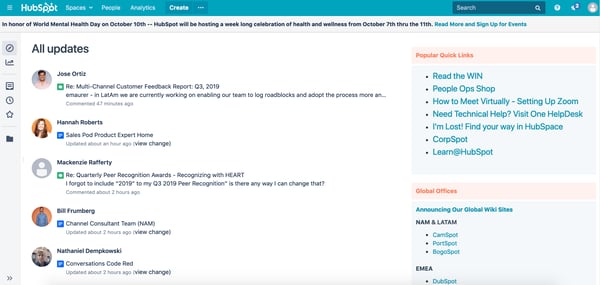
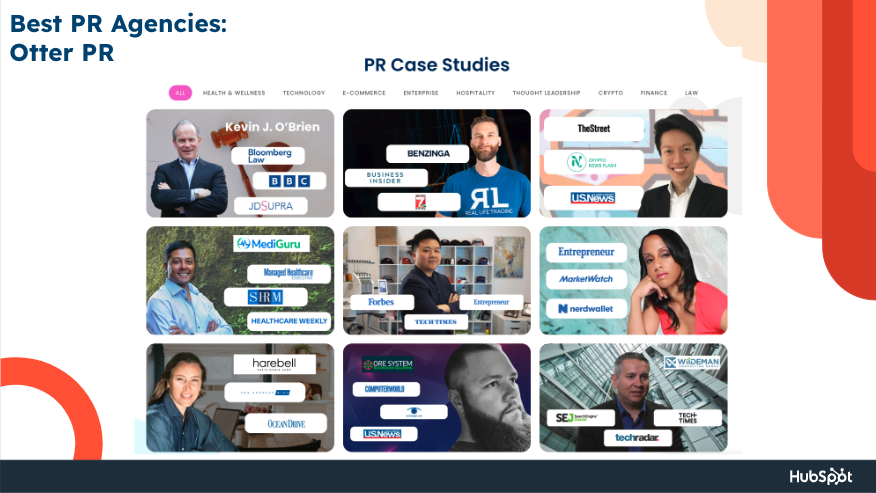
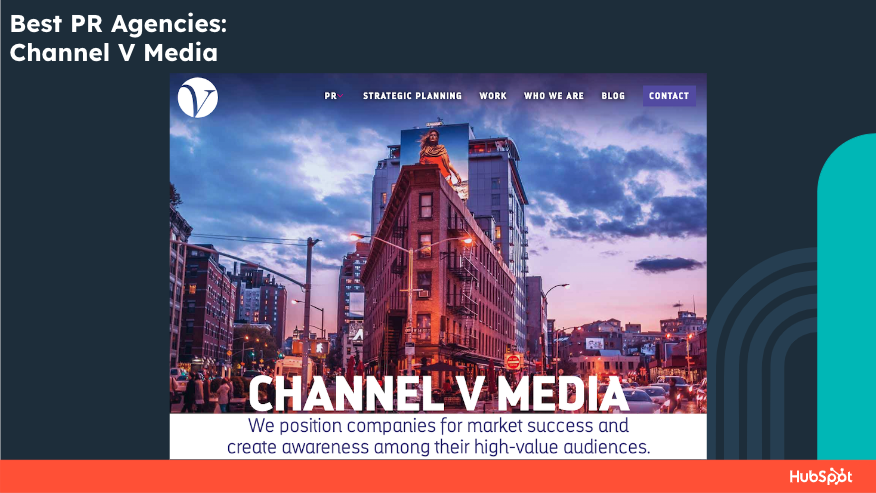

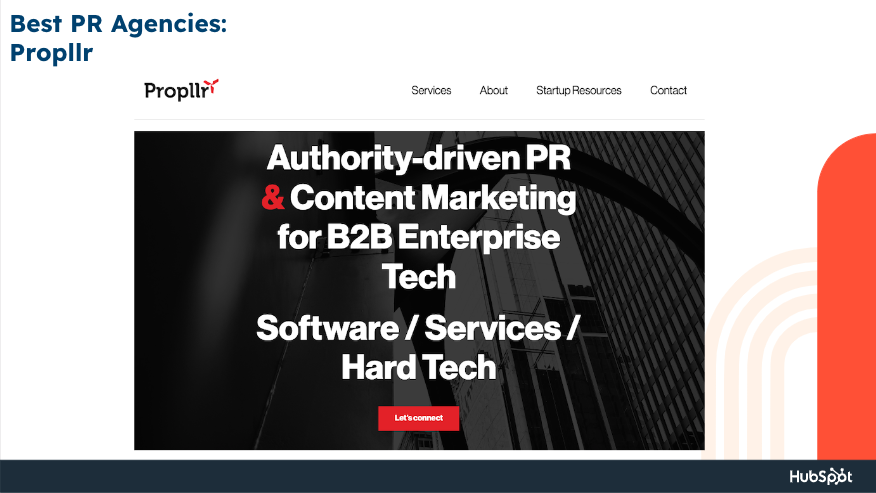


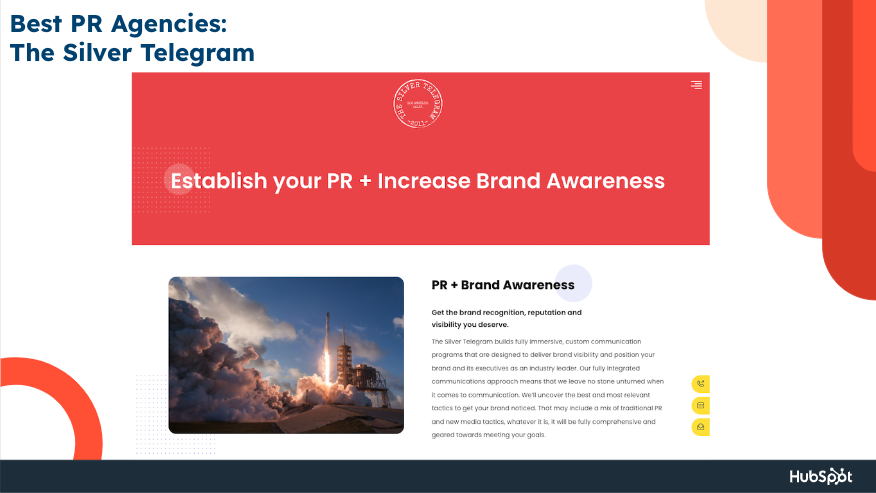

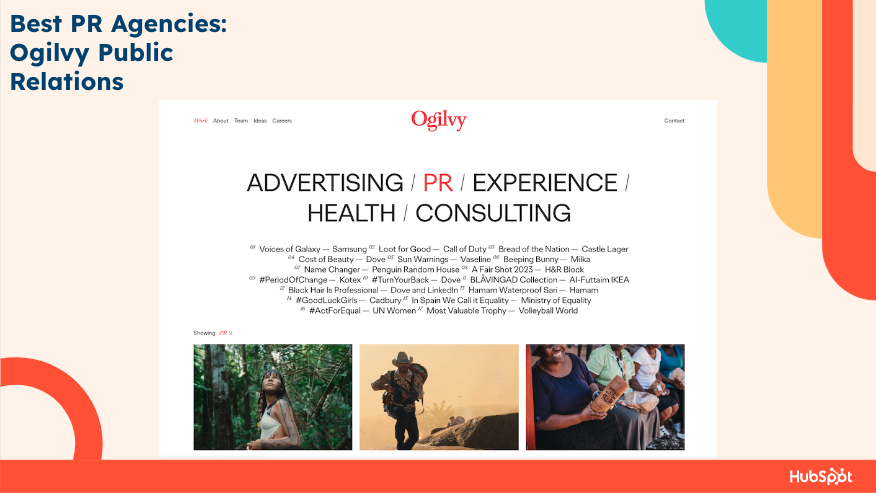
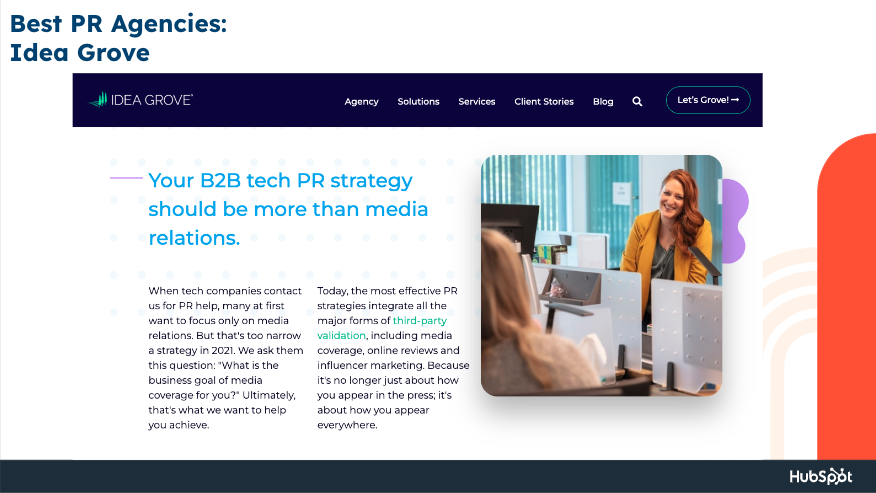
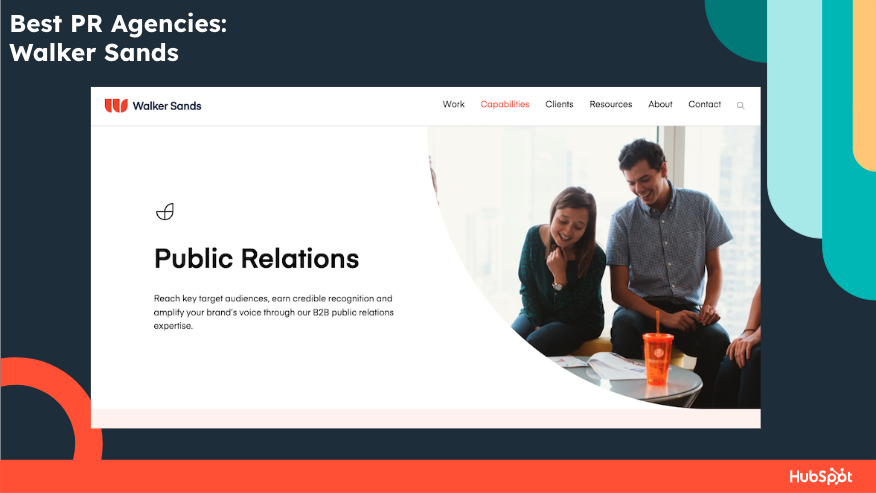



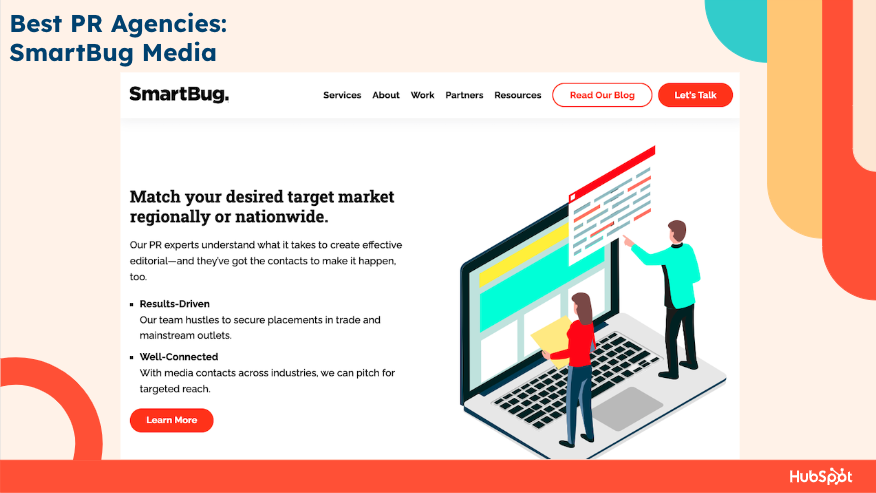













![How to Use AI For a More Effective Social Media Strategy, According to Ross Simmonds Download Now: The 2024 State of Social Media Trends [Free Report]](https://articles.entireweb.com/wp-content/uploads/2024/04/How-to-Use-AI-For-a-More-Effective-Social-Media.png)


